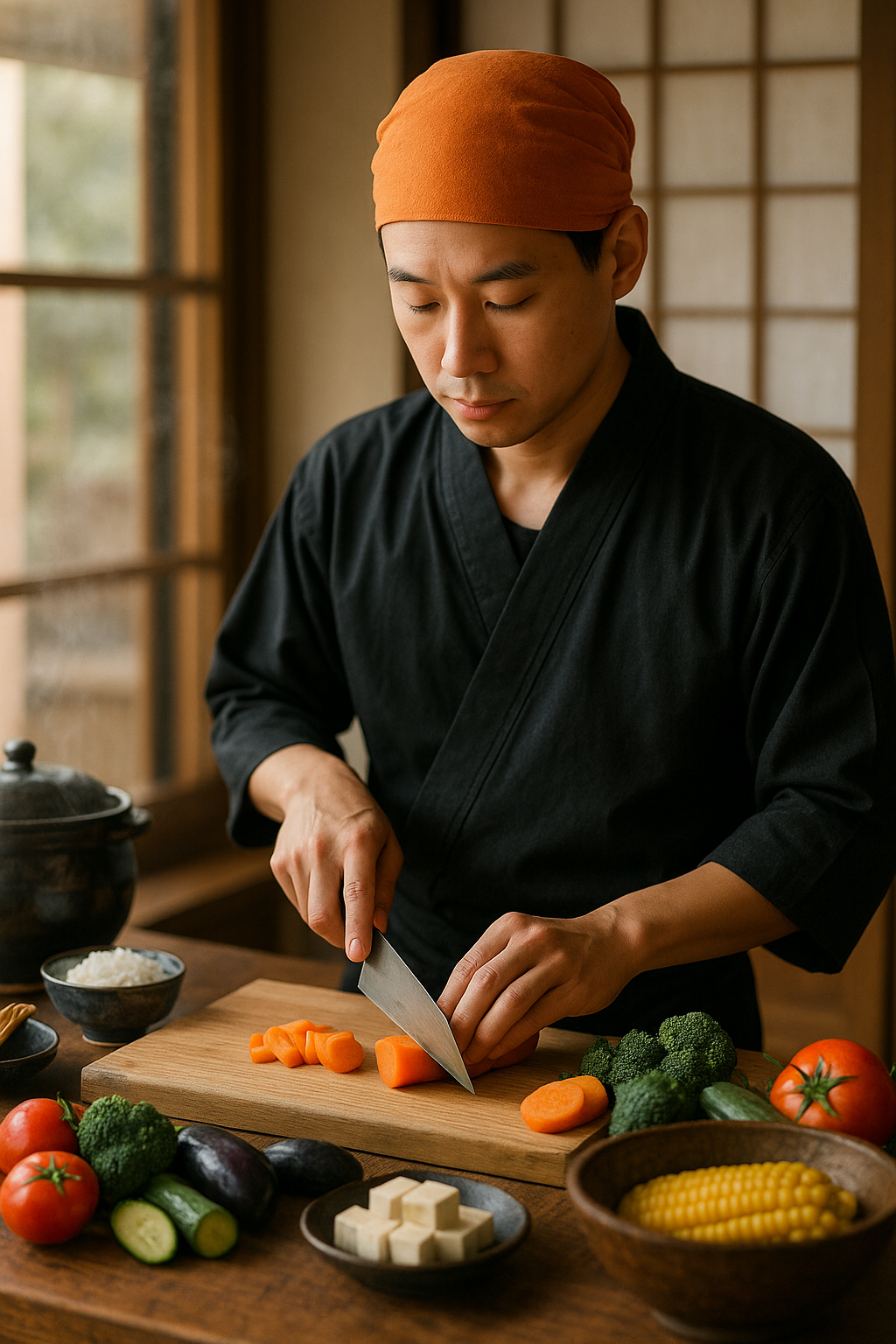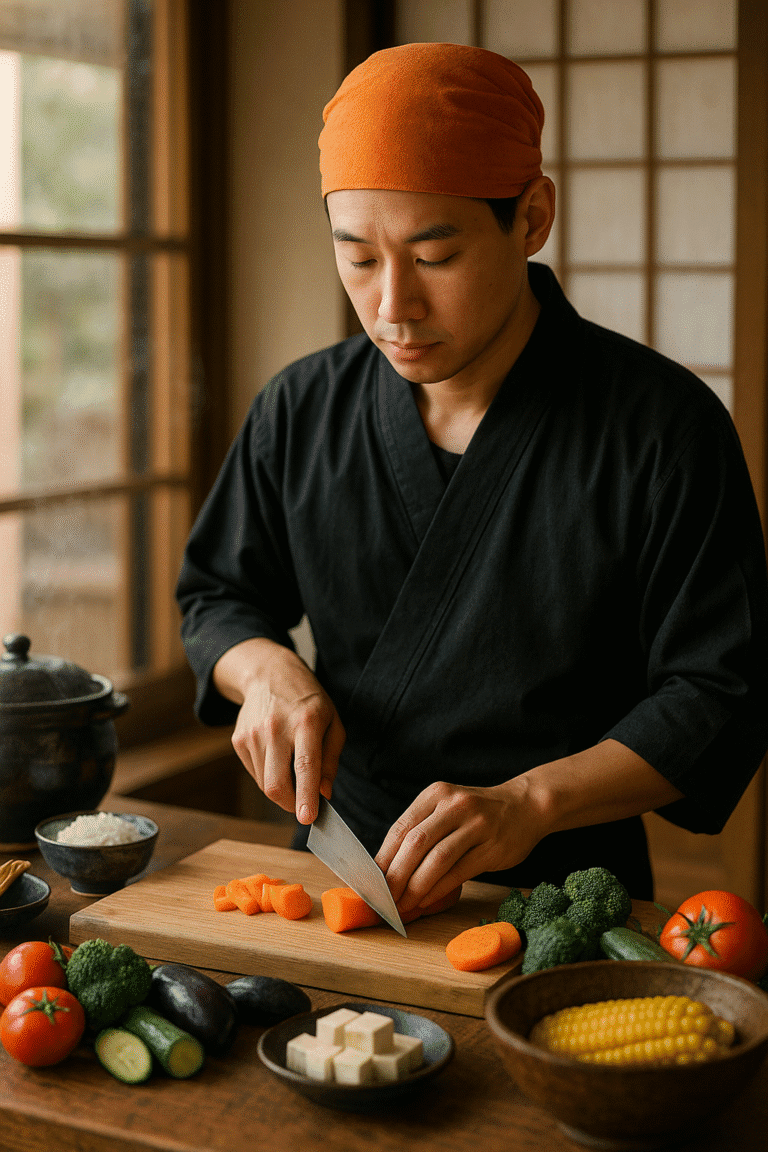La cérémonie de la cuisine japonaise

Un marché calme, un rituel calme
Le marché Nishiki, à Kyoto, s'éveille tôt. Les étals s'ouvrent comme des fleurs et l'air embaume déjà le sésame grillé, le bouillon dashi et les racines de lotus fraîchement rincées. Nous déambulons parmi des voix douces et des légumes qui semblent sculptés à la main.
Une vieille femme plie des feuilles de shiso avec des doigts aussi fins que du papier de riz. Un enfant goûte un tamagoyaki et affiche un large sourire. Et vous, peut-être sans vous en rendre compte, vous apprenez déjà à regarder différemment.
Au bout du chemin, une petite porte en bois s'ouvre doucement. Nous entrons pieds nus. Le tatami embaume le temps. Dans la cuisine, tout est à sa place : des bols en céramique émaillée, des couteaux qui ont une âme, une marmite de riz recouverte d'un linge blanc.
Le maître apparaît. Il ne dit rien, il incline simplement la tête. Chaque geste – se laver les mains, allumer le feu, couper une carotte – s'effectue comme s'il n'y avait rien de plus urgent au monde.
Puis, sans interrompre son rythme, il commence à parler.
« Ma grand-mère cuisinait avec les fenêtres ouvertes…
Elle a dit que le riz devait entendre le vent,
que si la vapeur restait emprisonnée, les souvenirs ne pourraient pas entrer.
Quand j'étais enfant et que je pleurais pour des choses que je ne comprenais pas,
elle m'a dit : « regarde l'eau bouillir, voilà à quoi ressemble la tristesse… »
mais si vous ajoutez quelque chose que vous aimez, cela se transforme en soupe.
Plus que de la cuisine
Personne ne pose de questions. Nous nous contentons d'écouter, tandis qu'il découpe le tofu avec la précision de quelqu'un qui a jadis fendu un chagrin en deux.
Pendant ce temps, le soleil pénètre solennellement à travers les panneaux de papier, et tout — absolument tout : le couteau, le bol, l'algue nori — semble être exactement à sa place.
Nous ne sommes pas venus ici uniquement pour apprendre à cuisiner.
Nous avons compris pourquoi, parfois, le silence guérit plus que les mots. De plus, nous avons appris qu'il existe des histoires transmises dans une cuillère de miso. Et que, comme le disait sa grand-mère, Ceux qui cuisinent pour les autres arrangent aussi leur propre cœur.
Certains repas ne nourrissent pas le corps, mais l'âme

